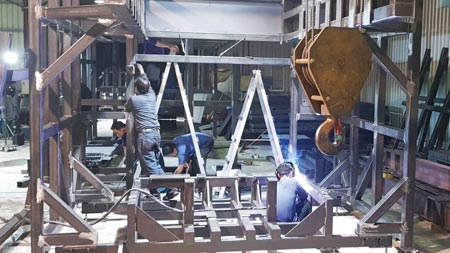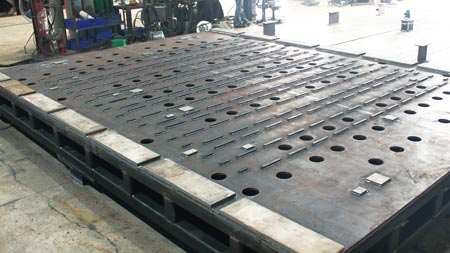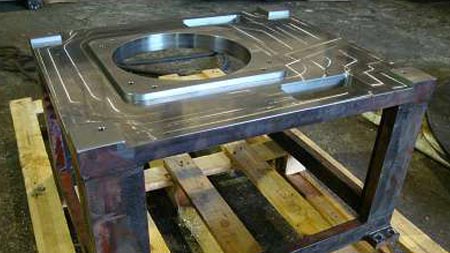Welding Frame




Welding frame are a common structural processing method extensively used in machinery, construction, transportation, and industrial automation. A welded frame involves assembling multiple metal components into a stable and robust structure through welding techniques, capable of withstanding high loads and long-term use. The quality of a welded frame directly impacts equipment stability and lifespan, making precision in welding technology and material selection crucial in the design and manufacturing processes.
Technical Advantages of Welding Frame
• High Structural Stability:
Welding frame offer exceptional strength and rigidity through multi-point welding, compared to bolt assembly or other methods. This results in superior torsional and seismic resistance, making them ideal for equipment that endures heavy loads.
• Flexible Design and Customization:
Welding frame can be customized to meet specific requirements, whether for complex structures or special uses. Welding technology accommodates various sizes, shapes, and materials, providing versatility for applications such as support frameworks for machinery, conveyor systems, and robotic bases.
• Durability and Longevity:
The high strength and corrosion resistance of welding frame ensure they perform reliably in demanding industrial environments. Selecting appropriate materials like stainless steel or carbon steel, combined with advanced welding techniques, extends the frame’s lifespan and reduces maintenance needs.
• Cost-Effectiveness:
Welding frame offer high material utilization and can be produced on a large scale, reducing production costs. The relatively simple welding process shortens production cycles and enhances overall efficiency.
Applications of Welding Frame
• Machinery Equipment:
Welding frame are fundamental support structures for various machinery, from industrial automation equipment to CNC machines, providing a stable foundation for operational precision and stability.
• Automation Production Equipment:
In industrial automation, welding frame are critical support systems for production lines, accommodating conveyors, robots, and inspection equipment while ensuring a stable and reliable base.
• Construction and Structural Engineering:
Welding frame are widely used in construction sites and infrastructure projects, capable of bearing significant weight and pressure, making them an integral part of steel structures in buildings.
• Transportation:
In the transportation sector, particularly for heavy vehicles like trucks, buses, and trains, welding frame play a crucial role in ensuring the safety and durability of chassis and body structures.
Material Selection and Welding Techniques for Selding Frame
The choice of materials for welding frame depends on application needs. Common materials include carbon steel, stainless steel, and aluminum alloys. Carbon steel offers good strength and economic benefits for general industrial use; stainless steel provides excellent corrosion resistance and durability for outdoor or corrosive environments; and aluminum alloys are preferred for lightweight structures.
Welding techniques primarily include fusion welding methods such as arc welding, MIG/TIG welding, and resistance welding. Choosing the right welding process ensures strong and aesthetically pleasing welds, minimizing thermal distortion and stress concentration.
Welding frame are indispensable in modern industry due to their high strength, flexibility, and durability. They play a vital role in machinery, construction, transportation, and automation equipment, offering reliable support and extending equipment lifespan.
Wei Sheng Industrial, located in Taoyuan, Taiwan, specializes in welding frame processing with extensive experience and advanced welding technology. We handle various types of welding frame, meeting diverse industry needs for structural frames. Our services include welding frame of multiple materials and designs, from standard frames to custom solutions. In addition to professional welding frame processing, Wei Sheng Industrial offers comprehensive one-stop metal processing services, including sheet metal fabrication, laser cutting, CNC milling, and automated equipment assembly. We are committed to delivering the highest quality products and services through top-notch technology and equipment, enhancing product quality and production efficiency. For your welding frame needs, contact Wei Sheng Industrial for tailored precision processing solutions.